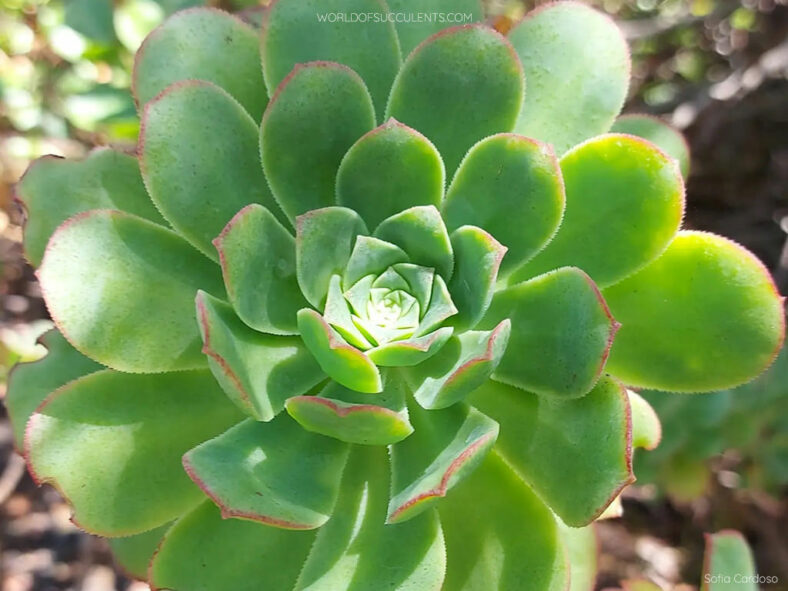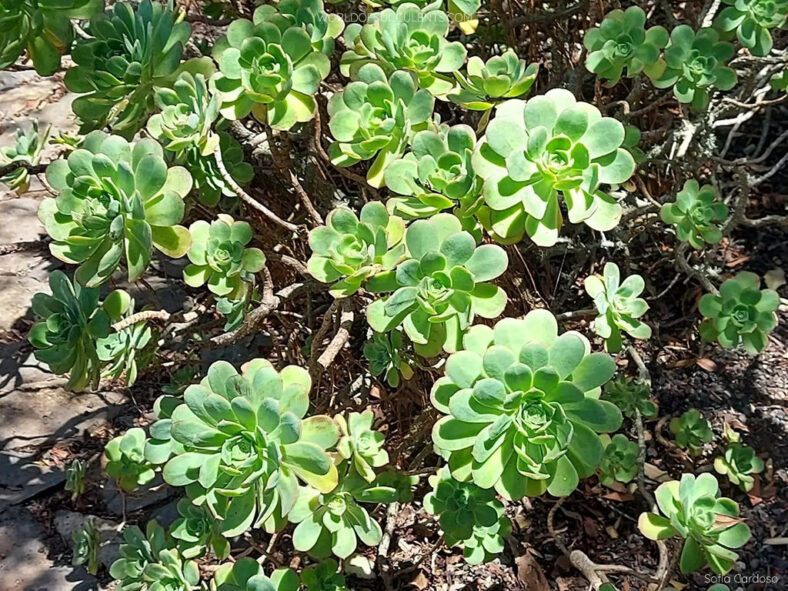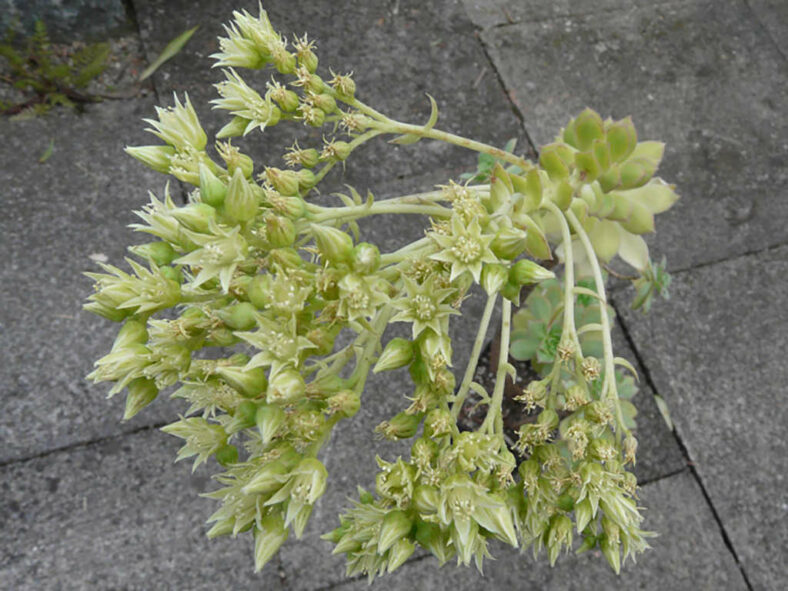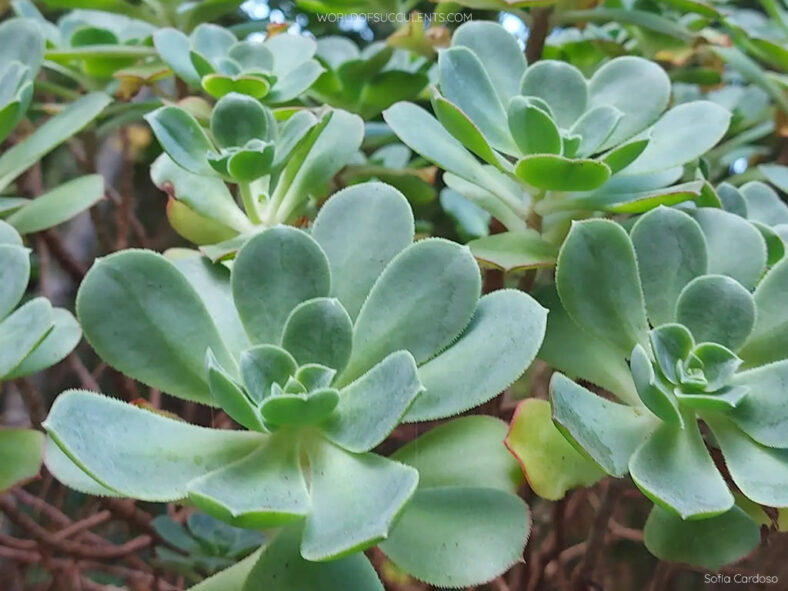Scientific Name
Aeonium gomerense (Praeger) Praeger
Synonym(s)
Sempervivum gomerense
Scientific Classification
Family: Crassulaceae
Subfamily: Sempervivoideae
Tribe: Aeonieae
Genus: Aeonium
Etymology
The specific epithet "gomerense (pronounced goh-mer-EN-see)" means "of or from Gomera" and refers to La Gomera, one of the Canary Islands.
Origin
Aeonium gomerense is native to the Canary Islands. It occurs on La Gomera at elevations between 1,640 and 3,610 feet (500 and 1,100 m).
Description
Aeonium gomerense is a loosely branched succulent shrub with ascending or pendent branches that end in rather flattish rosettes of green leaves, often reddish along the margins. It can grow up to 6.6 feet (2 m) tall, while the rosettes can reach up to 11.2 inches (28 cm) in diameter. The branches are smooth, reticulate, and can reach up to 0.6 inches (1.5 cm) in diameter. The leaves are obovate to oblanceolate with cilia on the margins and can measure up to 5.6 inches (14 cm) long and 1.6 inches (4 cm) wide.
The flowers are 7- to 9-merous, have whitish petals with a greenish lower surface, and appear in a large, egg-shaped cluster in late winter and spring on a stalk that can grow up to 8 inches (20 cm) tall. The flower cluster can reach up to 16 inches (40 cm) tall and 12 inches (30 cm) in diameter.

How to Grow and Care for Aeonium gomerense
Light: A. gomerense grows best in full sun to partial shade. Indoors, give it bright indirect light as much as possible. A leggy, stretched plant is a sign of not getting enough light.
Soil: While most succulents do well when planted in a potting mix specifically formulated for succulents, sandy loam or regular potting mix amended with perlite is better for A. gomerense because it requires some more moisture.
Temperature: This succulent does not like hot or dry weather and may go dormant in summer. It prefers temperatures between 65 and 75 °F (18 and 24 °C). A. gomerense can withstand temperatures as low as 30 °F (-1.1 °C). USDA Plant Hardiness Zones 10a to 11b, 30 to 50 °F (-1.1 to 10 °C).
Watering: A. gomerense requires more water than most succulents, but too much moisture can cause root rot. In spring and fall, water the plant thoroughly, then allow the soil to dry out before watering again. Water more sparingly in winter. The plant does not need to be watered during its summer dormancy except in arid conditions.
Fertilizing: Feed your plant with a half-strength balanced fertilizer once a month during the growing season. Do not feed A. gomerense when it is dormant in the summer months.
Repotting: If you grow A. gomerense in a container, repot with fresh potting soil every two to three years. Choose a container with drainage holes to avoid standing water and root rot.
Propagation: This succulent is very easy to propagate from cuttings. The best time to take cuttings is spring. Allow the cut end to dry for several days before placing it in the soil. It can also be propagated by seed. Sow the seeds in spring.
Learn more at How to Grow and Care for Aeonium.
Toxicity of Aeonium gomerense
A. gomerense is non-toxic to humans and animals.
Links
- Back to genus Aeonium
- Succupedia: Browse succulents by Scientific Name, Common Name, Genus, Family, USDA Hardiness Zone, Origin, or cacti by Genus
Photo Gallery
Click on a photo to see a larger version.


